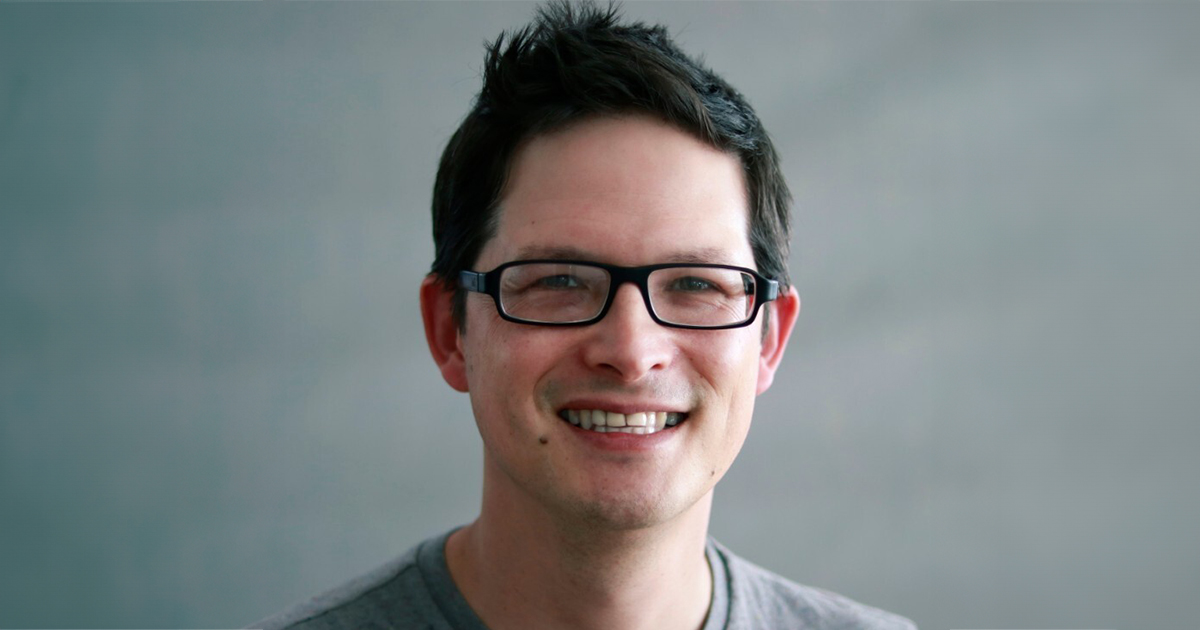
Just about two years ago, Lead Research Designer Kim Pimmel made a big switch—after ten years in product design at Adobe, he became one of the artists on the Adobe Research team. Now he helps turn cutting-edge research into products that fit the ways artists use their imaginations and get their work done.
Pimmel’s expertise and inspiration come from just about everywhere, including his years of experience as a designer; his love of filmmaking, augmented reality, and music; the puzzles he imagines, designs, and 3D prints for his backyard birds and squirrels; and even the electric skateboard he built for one very lucky cat.
So what’s a day in the life of a lead research designer like? One big part of the role is trying out Adobe Research’s latest developments and helping the team understand use cases and pain points from a creative’s point of view. From there, Pimmel also wraps UI around new tools for the best user experiences. “It’s all about empathizing with our customers,” Pimmel explains. “And then bringing my own special sauce to the projects, too.”
Pimmel also creates vision videos that help share Adobe Research’s work with other teams across the company. It’s a chance to highlight new technology and where it might be headed. For example, last year, Pimmel got word out about Project Blink , a new AI-powered approach to video editing, and product teams were eager to get on board with the internal beta. “Raising the visibility of work like Project Blink helps accelerate the process of getting new technology into our products—and into the hands of Adobe users,” says Pimmel.
Of course, it’s not just a matter of making a connection with the product teams, explains Pimmel. There’s a lot of knowledge that needs to be shared, and he’s there to help with that, too. “We collaborate closely with the product teams who’ve agreed to take on our technologies. I even embed with them through the process. It’s a practical, boots-on-the-ground way to get the product teams up to speed with what the technology can really do.”
Films, music, puzzles, and electric skateboards for cats
Pimmel doesn’t stop thinking about creative projects when he wraps up work for the day. He’s constantly making new things in all kinds of mediums. “I’m a multidisciplinary person and I think that hybrid nature helps me see things in a different way,” he says. “My personal projects get me in tune with different fields and let me think about practices and design principles for different types of work.”
One of Pimmel’s passions is filmmaking—his work has been featured at film festivals and he has two projects in the works right now. The first, Wake Me Up, is a sci-fi take on what happens to chatbots after we’ve finished asking them questions, but they’re still alive and waiting for us to return. He’s also collaborating with his wife, a costume designer, on a post-environmental disaster film, The Void Gardener. The couple teams up on fashion and photoshoots, too. Pimmel hones his skills in his own backyard as well. He uses 3D design tools and a 3D printer to create puzzles for squirrels and birds. His creations, which let an animal pull a string or move a part to get a treat, have received lots of love and millions of views on TikTok.

Inside the house, Pimmel designed and built a bespoke, electric skateboard for his cat. “She had a toy that she could tap with her paw to get a treat. So I started nerding out, thinking about that as a user experience,” he remembers. From there, Pimmel built more interfaces for his cat. First, there was an Xbox controller that triggered a motor to drop a treat. Then, the skateboard.
“Based on her ability to pull a lever for a treat, I created a little handle attached to a motor and hooked that to the wheels. Then I watched to see if she’d be comfortable going for a ride.” And she most definitely was. You can see a video of the design process, and Pimmel’s cat zooming around the house, on his website.
“I really get a kick out of designing stuff and challenging myself. And I think all of these things add up to seeing a bigger picture for our customers—getting to know how things like 3D modeling and different types of UI work out in the world. It’s one of the reasons I love being at Adobe. I’m one of our customers.”
Supporting the next generation of creatives
Pimmel also donates time to support his creative community. He helps develop motion graphics for the annual Nebula Awards ceremony honoring outstanding writing in science fiction and fantasy. And he’s a mentor for University of Washington grad students doing their Capstone Projects in Human-Computer Interaction + Design.
“Whenever I talked at conferences or to classes, students would always ask, ‘How did you end up doing such cool stuff?’ Their enthusiasm really made me want to give back to people who are just getting started in the field, so that’s how I got into helping with Capstone Projects at UW,” explains Pimmel. “I’ve been so lucky to work on creative products with great teams, and I love sharing the things I’ve learned along the way.”

Through all of his projects, Pimmel hopes he can inspire people to get in touch with their creative sides. “I found Photoshop in the back room of a science lab when I was in high school, and Photoshop on that computer changed my life. It let me create anything I had in my mind. It’s one of the reasons I love helping develop tools that let even more people to express themselves.”
Wondering what else is happening inside Adobe Research? Check out our latest news here.